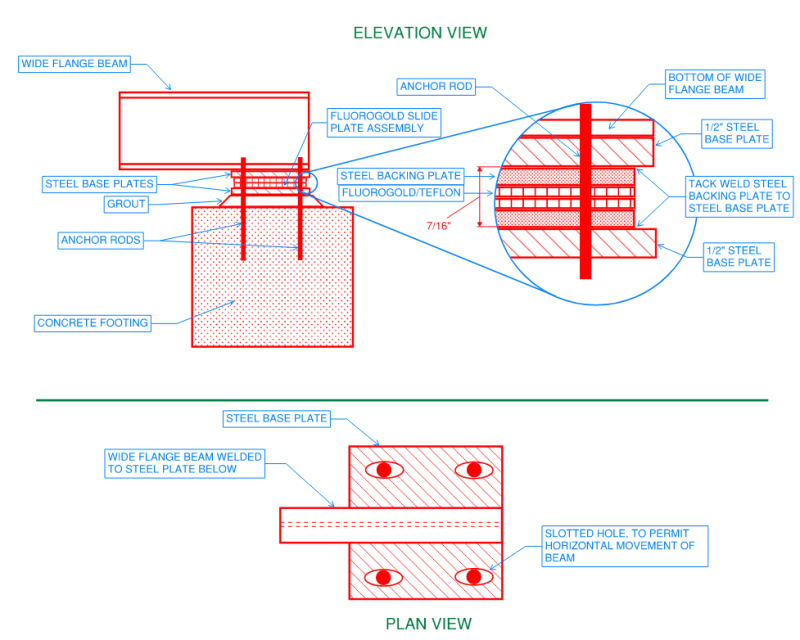jyokley
Structural
- Aug 17, 2022
- 2
Hello all,
I am trying to implement a fluorogold (PFTE Teflon) slide bearing plate assembly at the base plate connection of some steel beam members, to allow for unrestrained thermal expansion/contraction of the beam (pictured).
My questions are:
1) Does AISC Design Guide 1 still apply in this situation where there are two tack-welded sliding plates effectively sandwiched between two steel baseplates?
2) Am I allowed to consider these two outer base plates (let's say 1/2" thick) as effectively one 1" base plate for resisting bending forces?
3) Is it of any concern to have this weaker fluorogold material "going along for the ride" and deflecting with the bending of these outer steel plates, assuming the plates have sufficient bending capacity? The fluorogold material only has a tensile strength of 2 ksi compared to my 58 ksi base plates.


I appreciate any help, I'm a junior engineer and I haven't designed this type of connection before. Thanks!
I am trying to implement a fluorogold (PFTE Teflon) slide bearing plate assembly at the base plate connection of some steel beam members, to allow for unrestrained thermal expansion/contraction of the beam (pictured).
My questions are:
1) Does AISC Design Guide 1 still apply in this situation where there are two tack-welded sliding plates effectively sandwiched between two steel baseplates?
2) Am I allowed to consider these two outer base plates (let's say 1/2" thick) as effectively one 1" base plate for resisting bending forces?
3) Is it of any concern to have this weaker fluorogold material "going along for the ride" and deflecting with the bending of these outer steel plates, assuming the plates have sufficient bending capacity? The fluorogold material only has a tensile strength of 2 ksi compared to my 58 ksi base plates.


I appreciate any help, I'm a junior engineer and I haven't designed this type of connection before. Thanks!
